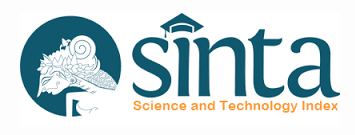DAKWAH MUSLIM DESIGNER COMMUNITY MELALUI DESAIN GRAFIS
Abstract
The study was qualitative field research using the sociological and da'wah sciences approaches. The primary data source of the study was 20 (twenty) members of the Muslim Designer Community (MDC), while the secondary data sources were readings or references related to the study topic. Open interview, participant observation, and document review were utilized in collecting the data, which were then analyzed through the phenomenological data analysis technique. MDC graphic da’wah activities, both in the real world and in cyberspace (internet) reflected two major dimensions of da’wah activities, namely the dimensions of treatise delivery (bi Ahsan al-qawl) and of the obedience or the application of truth values (bi Ahsan al-’amal). MDC interpreted the graphic da’wah activities as a form of visual da'wah, a marker of changes in society’s perception of dakwah, a reflection of contemporary da'wah movements, a possible visualizer counterpart, and a driver for the unification of the da’wah visualizers.
References
Almascaty, Hilmy Bakar. Panduan Jihad untuk Aktivis Gerakan Islam. Cet. 1; Jakarta: Gema Insani Press, 2001.
Amin, Samsul Munir. Ilmu Dakwah. Cet. I; Jakarta: Amzah, 2009.
AS, Enjang., dan Aliyudin, Dasar-dasar Ilmu Dakwah. Bandung: Widya Padjajaran, 2009.
Asiyah, Udji. Dakwah Simpatik: Meraih Simpati Audiens di Era Global. Jakarta: PT Gramedia Pustaka Utama, 2016.
Ilaihi, Wahyu. Komunikasi Dakwah. Cet. I; Bandung: PT Remaja Rosdakarya, 2010.
Ismail, A. Ilyas., dan Hotman, Prio. Filsafat Dakwah: Rekayasa Membangun Agama dan Peradaban Islam. Cet. I; Jakarta: Kencana, 2011.
Kusnawan, Aep., dkk. Dimensi Ilmu Dakwah. Bandung: Widya Padjajaran, 2009.
Kusrianto, Adi. Pengantar Desain Komunikasi Visual. Cet. I; Yogyakarta: Andi, 2007.
Kuswarno, Engkus. Metodologi Penelitian Fenomenologi. Bandung: Widya Padjajaran, 2009.
Mahfudz, Ali. “Hidayat al-Mursyidin” dalam Samsul Munir Amin. Ilmu Dakwah. Cet. I; Jakarta: Amzah, 2009.
Moleong, Lexy Johannes. Metodologi Penelitian Kualitatif. Bandung: Remaja Rosdakarya, 2001.
Morissan. Teori Komunikasi. Cet. I; Bogor: Penerbit Ghalia Indonesia, 2013.
Munawwir, Ahmad Warson. “Al-Munawwir: Kamus Arab-Indonesia” dalam Moh. Ali Aziz, Ilmu Dakwah. Cet. III; Jakata: Kencana, 2012.
Munir, Misnal. Aliran-aliran Utama Filsafat Barat Kontemporer. Yogyakarta: Lima, 2008.
Nasution, S. Metode Naturalistik Kualitatif. Cet. I; Bandung: Tarsito, 1996.
Nindito, Stefanus. “Fenomenologi Alfred Schutz: Studi tentang Konstruksi Makna dan Realitas dalam Ilmu Sosial”. Jurnal Ilmu Komunikasi 2. No. 1. Juni (2005): h. 79-94.
Pujileksono, Sugeng. Metode Penelitian Komunikasi Kualiatif. Malang: Kelompok Intrans Publishing, 2015.
Pujiriyanto. Desain Grafis Komputer: Teori Grafis Komputer. Yogyakarta: Andi Yogyakarta, 2005.
Rachmad, Supriyono. Desain Komunikasi Visual. Yogyakarta: Andi Publisher, 2011.
Raharjo, Budi. Memahami Teknologi Informasi: Menyikapi dan Membekali Diri terhadap Peluang dan Tantangan Teknologi Informasi. Cet. I; Jakarta: PT. Elex Media Komputindo, 2002.
Saputra, Wahidin. Pengantar Ilmu Dakwah. Cet. II; Jakarta: PT Raja Grafindo Persada, 2012.
Said, Nurhidayat Muh. Dakwah dan Berbagai Aspeknya. Cet. I; Makassar: Alauddin University Press, 2014.
Schutz, Alfred. The Phenomenology of The Social World. London: Heinemann Educational Book, 1972.
Siauw, Felix Y. Art of Dakwah. Jakarta Barat: Alfatih Press, 2017.
Supriyono, Rakhmat. Desain Komunikasi Visual: Teori dan Aplikasi. Yogyakarta: Penerbit Andi, 2010.
Tamburaka, Apriadi. Literasi Media: Cerdas Bermedia Khalayak Media Massa. Cet. I; Jakarta: Rajawali Pers, 2013.
Tinarbuko, Sumbo. Dekave (Desain Komunikasi Visual): Penanda Masyarakat Global. Yogyakarta: CAPS, 2015.
Usman, Husaini., dan Akbar, Purnomo Setiady. Metodologi Penelitian Sosial. Ed. 2; Cet.I; Jakarta: Bumi aksara. 2008.
Yuliastanti, Ana. Bekerja sebagai Desainer Grafis. Jakarta: Erlangga, 2008.
Zakaria, Abu Bakar. “al-Da’wah ila al-Islam” dalam Moh. Ali Aziz, Ilmu Dakwah. Cet. III; Jakata: Kencana, 2012.
Once an article was published in the journal, the author(s) are:
granted to the journal right licensed under Creative Commons License Attribution that allows others to share the work with an acknowledgment of the work's authorship. permitted to publish their work online in third parties as it can lead to wider dissemination of the work. continue to be the copyright owner and allow the journal to publish the article with the CC BY license receiving a DOI (Digital Object Identifier) of the work.





